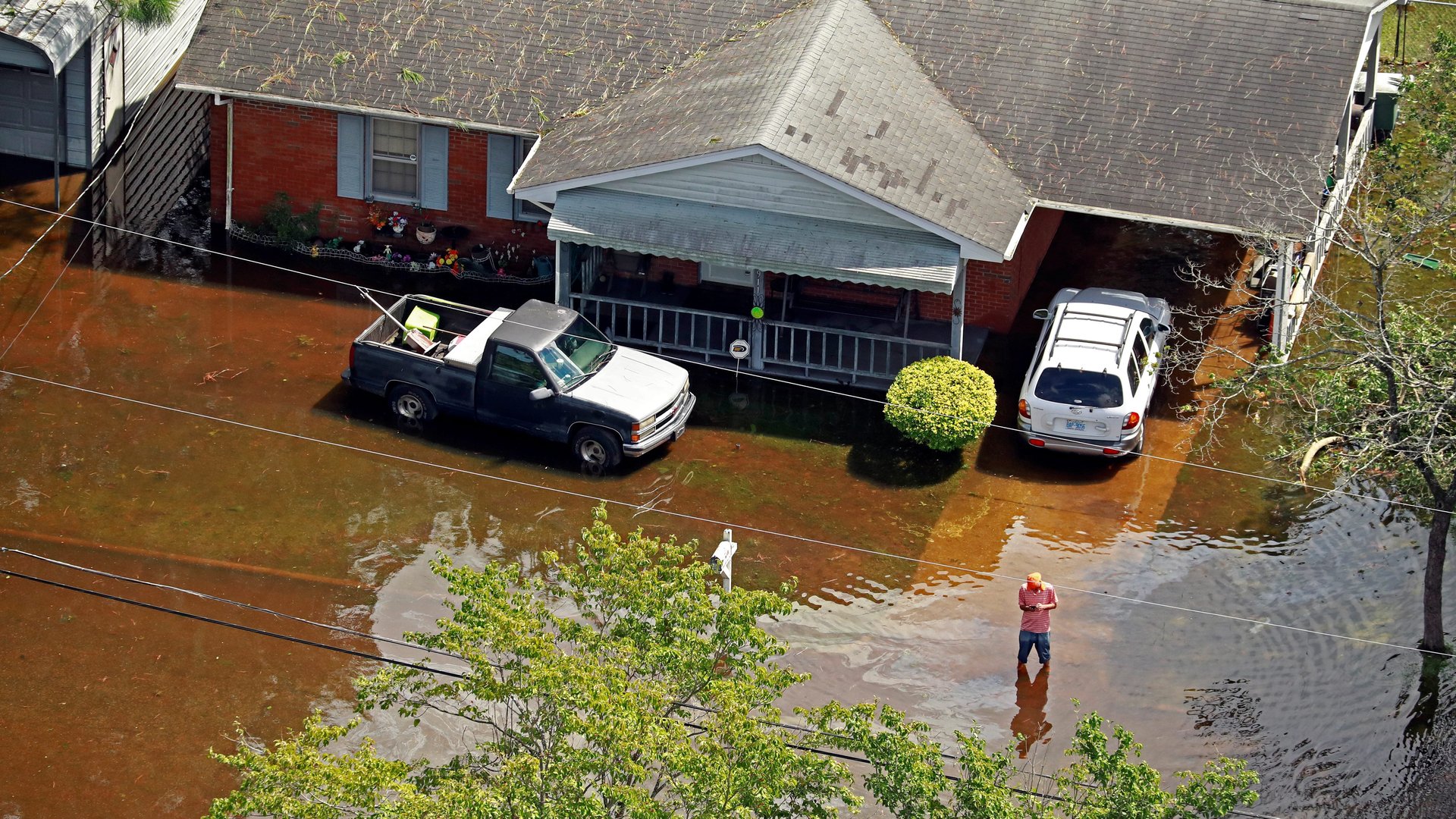Biden’s new executive order on climate change leaves a key question unanswered
Climate change poses a grave risk to the financial system. Catastrophic impacts like sea level rise and drought threaten critical supply chains, home mortgages, and infrastructure, and the escalating transition away from fossil fuels could destabilize banks’ investments in fossil energy companies. Savings accounts and pension funds, in turn, are in jeopardy. Yet so far, only a minority of global banks have attempted to calculate their exposure to climate risk, and even fewer have publicly disclosed it.


Climate change poses a grave risk to the financial system. Catastrophic impacts like sea level rise and drought threaten critical supply chains, home mortgages, and infrastructure, and the escalating transition away from fossil fuels could destabilize banks’ investments in fossil energy companies. Savings accounts and pension funds, in turn, are in jeopardy. Yet so far, only a minority of global banks have attempted to calculate their exposure to climate risk, and even fewer have publicly disclosed it.
That could change soon in the US, following a new executive order issued by president Joe Biden on the evening of May 20 that mandates the development of new rules and priorities for a host of federal agencies whose work touches on the financial system. The order broadly seeks to identify and mitigate climate-related risks, and directs the treasury secretary, the director of the National Economic Council (NEC), and other top officials to report back within the next few months on how financial regulation, federal lending, and procurement policy should all be revamped to encourage more private-sector capital to flow into clean energy and other climate-friendly investments.
The order sets an ambitious agenda, but leaves most of the important details undecided. Crucially, the order is vague about its ultimate scope: How far will the government go to crack down on carbon-intensive finance? Does the mere act of making banks and other companies reveal their carbon footprint precipitate progress on eliminating climate risk? Or do regulators need to be more proactive?
“The substantive question is how much will the emphasis be on risk assessment and disclosure, versus regulatory supervision that mitigates the risk itself,” said Madison Condon, a professor of environmental and financial law at Boston University. “The regulatory bodies that oversee banks and lenders could go one step forward and actually penalize agencies whose lending is contributing to the climate crisis.”
Will the US follow the EU model on climate risk?
The order states that the administration’s goal is to “advance consistent, clear, intelligible, comparable, and accurate disclosure of climate-related financial risk…while accounting for and addressing disparate impacts on disadvantaged communities and communities of color.” To that end, it directs officials in various departments to investigate climate risk in public pensions, federal lending, and flood insurance programs, and in the federal budget. It recommends overturning a Trump-era order that barred financial institutions from making investment decisions based on environmental, social, and governance (ESG) factors. And it seeks to flex the government’s procurement power by requiring government contractors to disclose their carbon footprints, and by potentially giving preferential treatment to greener bidders.
These steps bring the US closer to alignment with the European Union, which has been grappling with these questions for a few years already, and has taken some early steps in the direction of proactive oversight. In April, the European Commission published a so-called “sustainable finance taxonomy,” that laid out specific rules for what types of investment can count as green, rules that regulators could eventually use to compel banks to shift their assets. But the rules took years of intensive lobbying to develop, and remain unsettled on the pivotal question of whether natural gas counts as green. If the US wanted to follow suit, it would need to develop a similar list or replicate the EU’s.
Still, top climate diplomat John Kerry suggested in April that disclosure alone could be sufficient, saying that “suddenly people are going to be making evaluations considering long-term risk to the investment based on the climate crisis.”
There’s no question that better disclosure requirements would help hold corporate polluters to account on their stated decarbonization targets, Condon said. Still, it may not be enough. Banks (and businesses, in general) will have to wait a few months until the agency reports hit the president’s desk to get a better idea of the work they have ahead—and how much pressure they’ll be under to ditch fossil fuels.